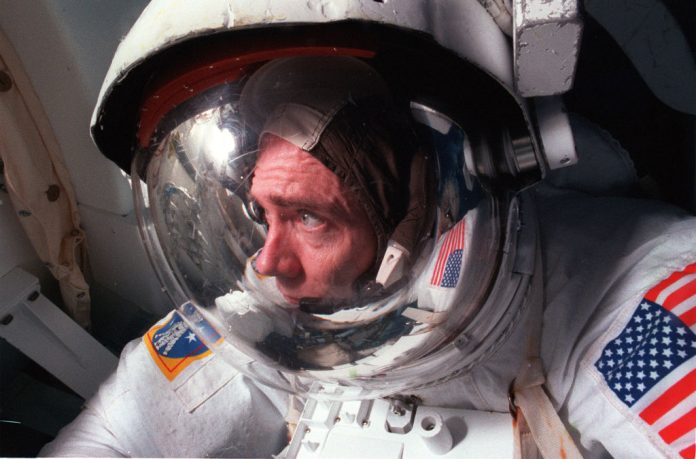Wearable devices have emerged as a potential solution to prevent astronauts from experiencing spatial disorientation during spaceflight, a condition that poses significant risks. A recent study, led by Dr. Vivekanand P. Vimal from Brandeis University in the United States, suggests that these wearable devices, equipped with vibrotactors that provide orientation cues, can significantly enhance the effectiveness of spatial disorientation training, ultimately contributing to safer space missions.
Space travel exposes astronauts to various physiological and psychological stressors, making them highly susceptible to spatial disorientation. When disoriented, astronauts cannot rely on their internal sensors, which they have depended on throughout their lives. To address this challenge, the researchers employed sensory deprivation and a multi-axis rotation device to evaluate the vibrotactors’ efficacy in simulated spaceflight conditions, where the participants’ usual sensory cues were rendered ineffective.
The study involved 30 participants, with 10 receiving training on balancing in the rotation device, 10 using vibrotactors, and the remaining 10 receiving both training and vibrotactors. All participants were familiarized with the rotation device and instructed on its operation. Those with vibrotactors wore them on each arm, and these devices vibrated when the participants moved away from the balance point. The participants were blindfolded, equipped with earplugs, and exposed to white noise. They were tasked with maintaining the rotation device as close to the balance point as possible during 40 trials, with half of the trials simulating Earth-like conditions and the other half replicating spaceflight scenarios.
Initially, all groups experienced disorientation during the spaceflight analog trials due to the absence of natural gravitational cues. Participants generally reported trust in the vibrotactors but also expressed confusion stemming from conflicts between their internal cues and the vibrotactors. The group wearing vibrotactors outperformed the training-only group, as the latter crashed more frequently, exhibited greater movements around the balance point, and destabilized themselves more often. However, the group receiving both training and vibrotactors showed the best performance as the trials progressed.
Despite improvements, participants in the spaceflight analog trials did not perform as well as they did in Earth-like conditions. This discrepancy could be attributed to insufficient time to integrate vibrotactor cues or the possibility that the vibrotactors’ signals were not strong enough as warning signals.
Dr. Vimal emphasized that achieving deep, almost sub-cognitive trust in external devices would be crucial, necessitating specialized training. If further trials confirm the success of these sensors, they could find various applications in spaceflight, such as enhancing astronaut safety during planetary landings and supporting extravehicular activities in space.















